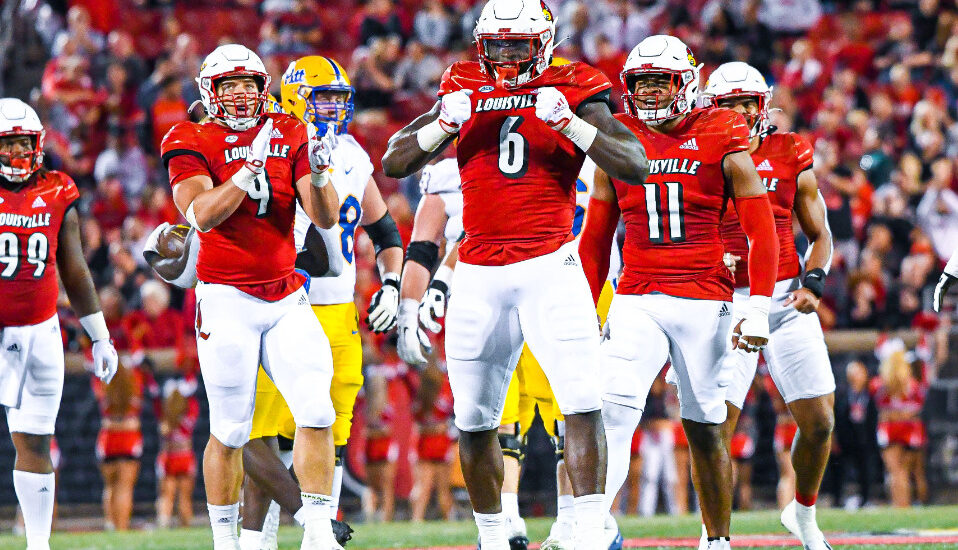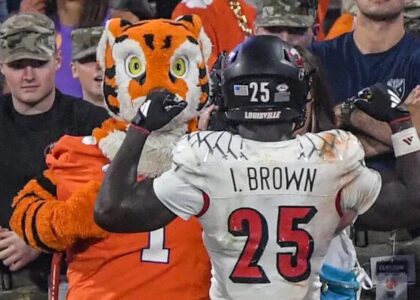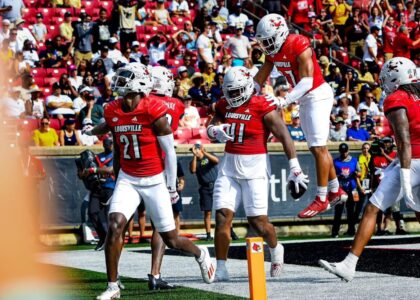The statistics show that the Louisville football defense has been solid all season. By making some minor changes, that unit is finally yielding some victories.
It’s been said that luck is what happens when preparation meets opportunity.
For the 2022 Louisville football defense, the road to what most around the program would deem a “success” has been filled with a lot of speed bumps along the way.
But does recent success have luck to thank, or were there signs that Louisville has been trending in the right direction all along?
Louisville was special on defense in Saturday’s crucial victory over defending ACC Champions, Pitt. The Cards secured 4 turnovers, 7 QB hurries, and 6 tackles for loss.
However, it seems the writing has been on the wall that this UofL defense is one of the premier units in the country, not just recently, but since the start of the season.
Let’s dive into why.
The stats show that Louisville boasts a top-tier defense
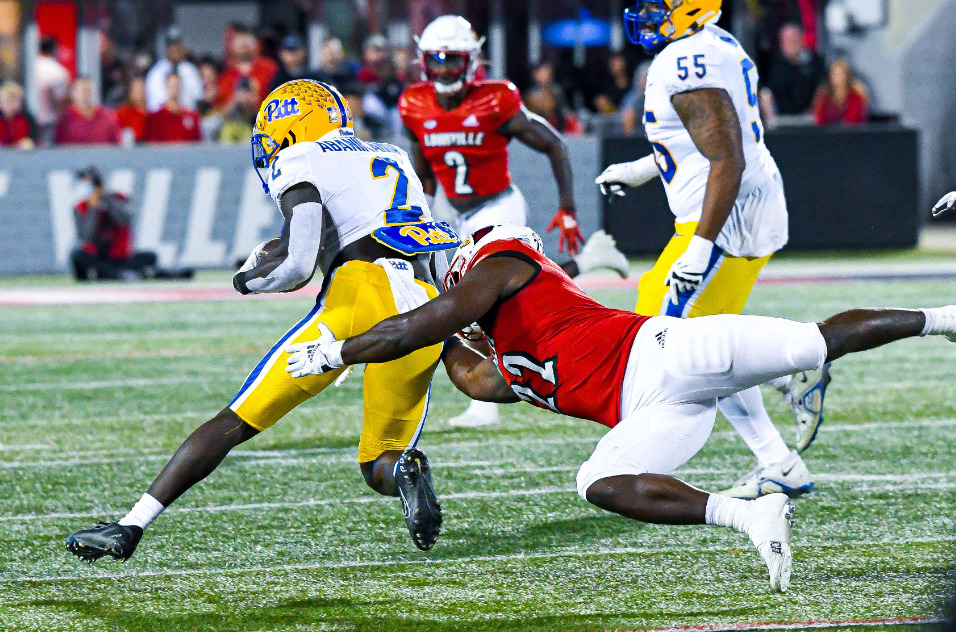
Last week, I wrote about how the Louisville football pass rush defense is on pace to be historically great.
The Cards still rank 1st among Power Five teams with 3.57 sacks per game.
The Cards are 3rd among Power Five teams with 7.4 tackles for loss per game- Trailing only Oklahoma State and Clemson.
Louisville is also now tied for 3rd against Power Five teams in defensive turnovers accounted for. The Cardinals have forced 16 turnovers on the season and 15 in the last five games.
The Louisville football scoring defense ranks 26th in the country and 16th among Power Five teams. Louisville has allowed 11.0 points per game in its 4 wins.
Louisville’s defense has also learned how to adjust on the fly in its wins. The Cards allow 3.25 points per game in the second half of their victories.
The Louisville defense has been dominant in stretches.
Earlier this year, I argued that it was the Louisville football offense- NOT the defense– that was costing the program games.
The numbers seem to more than back this up.
In each game this season, Louisville’s defense has gotten a stop- Either a punt, take away, or turnover on downs- for long stretches of games.
Here are Louisville’s longest stretches with no points allowed in each game:
Syracuse: 4 consecutive stops
UCF: 10 consecutive stops
FSU: 5 consecutive stops
USF: 9 consecutive stops/ 3 consecutive stops
BC: 2 consecutive stops
UVA: 6 consecutive stops/ 3 consecutive stops
Pitt: 5 consecutive stops/ 4 consecutive stops
The further we progress this season, the more we can see that the Boston College game was an anomaly.
Syracuse and Florida State have proven to be solid opponents with great offenses. Both are either top-25 or fringe-ranked teams. Pitt was once ranked this season and still figures into the ACC Coastal Divison race. Central Florida now boasts a top-20 offense and defense.
Louisville football has built a solid defense against a solid group of opponents as well. Here is how each team’s scoring offense stacks up nationally.
UCF 19th
Syracuse 36th
Pitt 55th
FSU 62nd
USF 89th
Boston College 114th
Virginia 123rd
Louisville will try to continue its upward trajectory against stiff competition in game 8. Sam Hartman and the Wake Forest offense rank 10th nationally in scoring offense while coming in at 37th in total offense. Efficiency is the name of their game, which will prove to be the defense’s toughest challenge yet.
Eliminating the “Big Play”
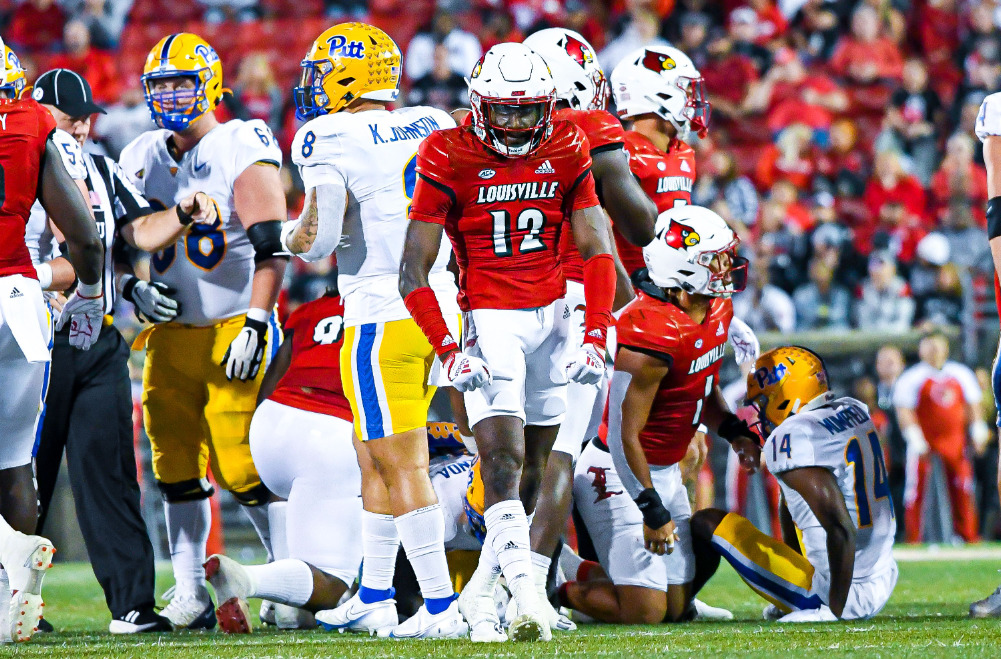
Perhaps the oddest trend in 2022- and the statistic that one could point to as the reason Louisville football is 4-3 and not 6-1- is the big play.
That is plays from the opponent that are longer than a 10-yard run or 15-yard pass.
This has been a bugaboo for a while now, but all indications are that UofL is trending in the right direction.
Entering Louisville’s game at Virginia, Louisville had allowed 66 “big plays” in 5 games.
Against Virginia, Louisville gave up 10 big plays.
Against Pitt, Louisville allowed 3 big passing plays and 5 big rushing plays. Notably, the Cards only gave up five plays over 15 yards.
For comparison’s sake, Louisville gave up 14 big plays to FSU and 13 at Boston College. In those two games, five big plays went for touchdowns.
The Louisville football defense is stout in most instances. When players leak out, get into the secondary, and pick up chunk yardage, that is when a typically good defense looks massively unprepared.
If the Cardinals can continue to improve the number of big plays they allow, the trend of keeping teams below their normal outputs should continue.
Small changes from the coaching staff
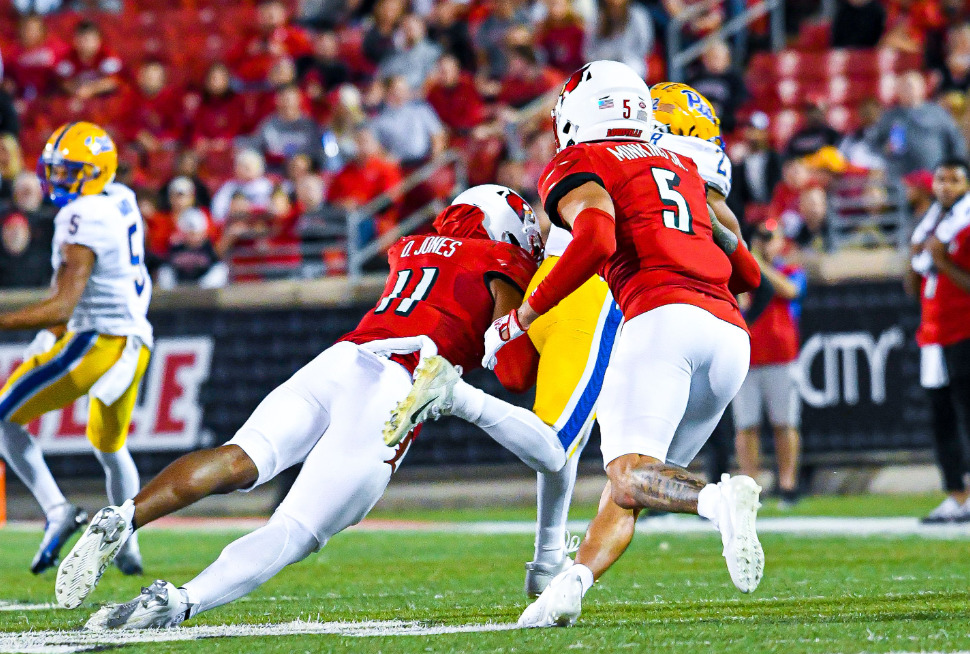
In a somewhat surprising post-bye week presser, Satterfield told the media that he would be overseeing the defense more in the proceeding weeks.
What followed has been a slightly different identity on defense.
Louisville heavily featured corner Tre Clark as a third safety while playing starting strong safety Kenderick Duncan the lion’s share of snaps.
Duncan did not see the field in Louisville’s win over Pitt, replaced by Temple transfer M.J. Griffin.
Griffin, who played only sparingly in the first five games, has seen a massive increase in snap share while taking over for Duncan.
Clark appears to be getting closer to the player we’ve seen in years past. Once one of the top lockdown corners in the league, he looked like a shell of his former self in Louisville’s early games. Now, however, he looks more comfortable opposite fellow corners Jarvis Brownlee and Quincy Riley.
Former starter Chandler Jones has stepped into a more prominent role of late, while depth pieces like Tre Franklin, TJ Quinn, and Marvin Dallas are stepping in to spare the starters.
Asked about the changes his staff made since Louisville’s bye week, he indicated that small changes are making a major difference when it comes to giving up big plays.
“Let’s give up this and not that, I think that’s the big thing,” Satterfield said Tuesday. “If you go back to the last two weeks, it’s really those big plays. That’s really what it comes down to. And we talked about this earlier, our defense has been getting great pressure. We are number one in the conference in sacks at 25 maybe right now. We’re at the halfway point, close to halfway and that’s outstanding. It was just those over-the-top plays, and it really has just been that. Thinking about how we can keep a post player back there or safety back, guys on top, make teams drive the ball. I think our guys have done a really good job with that.”
In its game at Virginia, Louisville football allowed four big plays and returning home against Pitt, UofL allowed two big plays to the Panthers after halftime. Two of those 6 plays were an 11-yard run and a 19-yard pass in garbage time.
Looking at the numbers, its apparent that the Louisville football defense has been outstanding all season.
Now, by making some tweaks to eliminate the big plays, UofL is seeing the fruits of its labor that spans the last four seasons.

